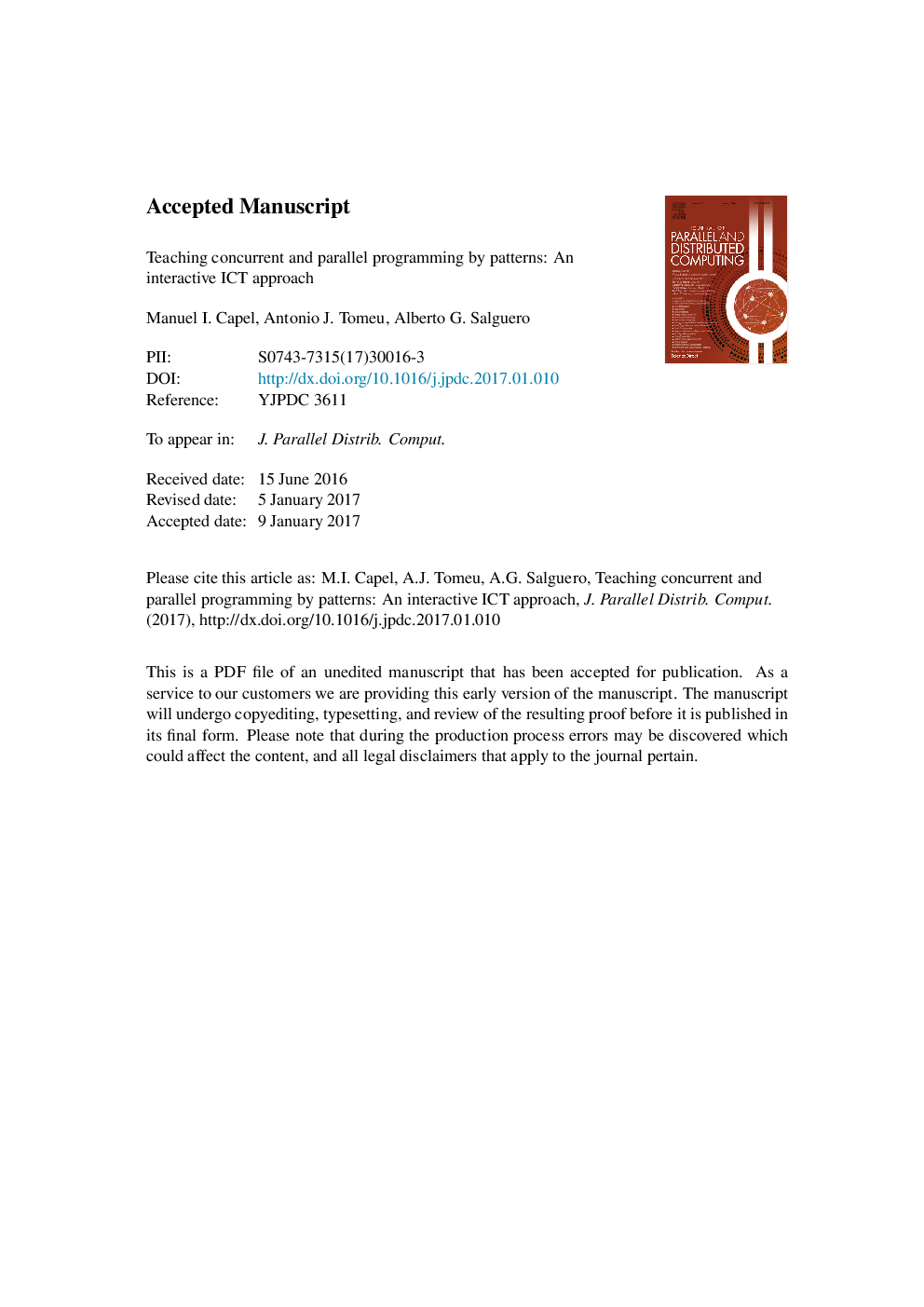| کد مقاله | کد نشریه | سال انتشار | مقاله انگلیسی | نسخه تمام متن |
|---|---|---|---|---|
| 4951691 | 1441480 | 2017 | 25 صفحه PDF | دانلود رایگان |
عنوان انگلیسی مقاله ISI
Teaching concurrent and parallel programming by patterns: An interactive ICT approach
دانلود مقاله + سفارش ترجمه
دانلود مقاله ISI انگلیسی
رایگان برای ایرانیان
کلمات کلیدی
موضوعات مرتبط
مهندسی و علوم پایه
مهندسی کامپیوتر
نظریه محاسباتی و ریاضیات
پیش نمایش صفحه اول مقاله

چکیده انگلیسی
The use of programming patterns is considered to be a conceptual aid for programmers for developing understandable and testable concurrent and parallel code which is not only well built but also safe. By using programming patterns and their implementations as computer programs, difficult new concepts can be smoothly taught in lectures to students who before trying this teaching approach would have been reluctant to enroll on Parallel and Concurrent Programming courses. The approach presented in this paper consists in changing the traditional programming teaching and learning model to one where students are first introduced to syntactical constructs through selected introductory program code-patterns. In the theory lessons that follow, through the use of laptops with multi-core processors and access to the Virtual Campus services of our university, the students are easily able to implement and master the new concepts as they are taught. This teaching experiment was implemented to teach a concurrent and real-time programming course which is part of the computer engineering (CE) degree and taught during the third semester of the CE curriculum. Evaluation of the students' academic performance when they had been taught with this approach revealed a 20.6% improvement in the students' end-of-course grades.
ناشر
Database: Elsevier - ScienceDirect (ساینس دایرکت)
Journal: Journal of Parallel and Distributed Computing - Volume 105, July 2017, Pages 42-52
Journal: Journal of Parallel and Distributed Computing - Volume 105, July 2017, Pages 42-52
نویسندگان
Manuel I. Capel, Antonio J. Tomeu, Alberto G. Salguero,